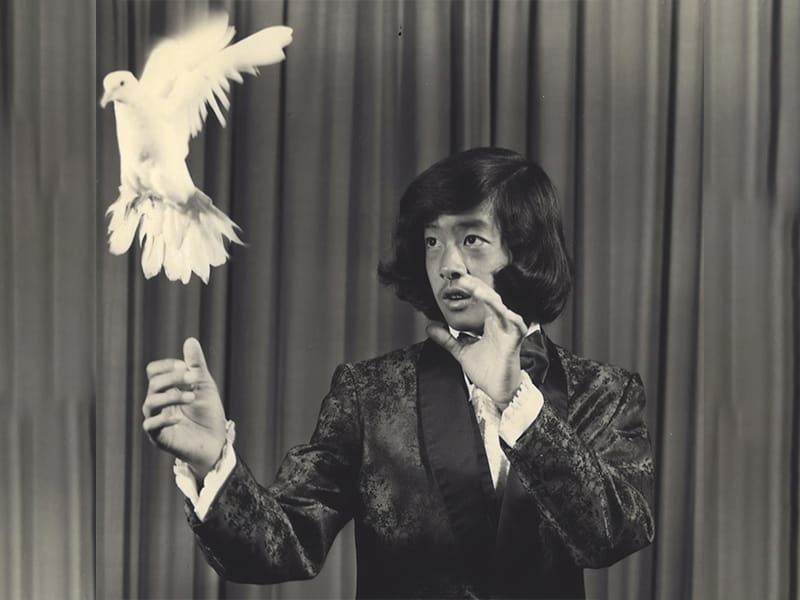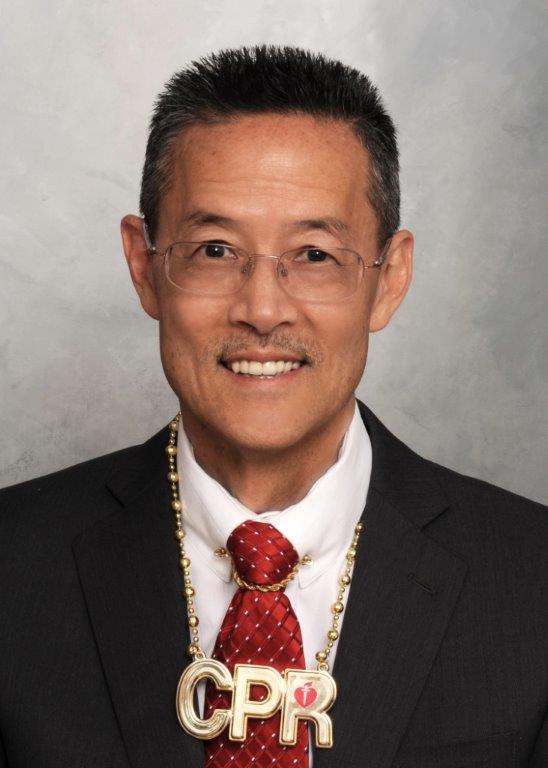Magician-turned-doctor knows the trick to helping save lives with CPR – just watch
By American Heart Association News

Dr. Alson Inaba has no shortage of tricks up his sleeve.
He's the doctor who figured out that the Bee Gees tune "Stayin' Alive" has the same beat you need to do CPR correctly, making the disco classic a powerful tool to keep hearts pumping.
For his next act, Inaba hopes to set lifesaving to a more modern tune – Bruno Mars' "Uptown Funk."
"One phrase that Bruno repeats over and over in his song is, "Don't believe me, just watch,'" Inaba said. "Imagine this scene: Two people see a colleague collapse from sudden cardiac arrest. The first person says to the second, 'Did you know that if I do chest compressions to 'Uptown Funk,' I could save this person's life? Don't believe me? Just watch!'"
Such thinking shows why the 58-year-old physician is being honored with the American Heart Association's first Innovation at Heart award later this month in Dallas.
Inaba, a pediatric emergency medicine specialist at the Kapiolani Medical Center for Women & Children in Honolulu, ties his innovative ideas to a skill he started practicing as a child. When he was a shy sixth-grader, his mom, Gladys, bought him a magic kit and told him he'd be performing at a school Christmas party. The whole family was soon taking part in his magic act.
Inaba's dad, Alan, took breaks from his work in the tire business to handle music and lighting for the shows, while his mom found herself balancing backstage business and props. Sister, Alana, was a willing assistant, ready to "float" or be cut in half at a moment's notice. The family's gigs varied from small parties to weddings, on different islands in Hawaii and as far away as Japan.
In the late 1970s, when he was 16, Inaba got a call from his agent – yes, he had an agent – that a young magician who was trying to break into the majors needed a local junior magician for his opening act. Inaba won the gig, and the family formed a friendship with the up-and-coming performer.
His name? David Copperfield.
"Meeting David Copperfield before he was a big name was the highlight of my so-called magic career," Inaba said. The magician taught him that a good show was a lot more than just tricks. "It was about dance routines, stories and music, and how one magic effect leads to another."
That lesson stuck with Inaba. He always thought he'd be a professional magician, but a high school biology class piqued his interest in medicine. He graduated from medical school in 1987. It was there, at Tufts University, that incorporating magic really came into play. The trick was, well, be like Copperfield, he said.
"Anyone can do a lecture," Inaba said. "I do presentations instead. It's how you present the information that can make all the difference."
It was in 2005 that he started teaching medical students and pediatric residents to do chest compressions to the beat of "Stayin' Alive." But Inaba wants folks to know that CPR – which can double or triple the chance of surviving a cardiac event – isn't magic at all.
Ten years ago, a Floridian who saw CPR with "Stayin' Alive" on the "Today" show used it to save a man who collapsed during his daily run. He pushed hard and fast on the victim's chest while humming a familiar tune: "Ah, ha, ha, ha, stayin' alive, stayin' alive. Ah, ha, ha, ha, stayin' alive."
That lifesaving mantra is part of Inaba's work, as Inaba sees about 40 pediatric patients a day in his hospital's emergency room. That means the next day he'll make 40 courtesy follow-up calls to check on those patients. "The nurses thought it was crazy that I was coming in on my day off," but now he's known for those calls and he wouldn't have it any other way.

Through his advocacy work, Inaba has helped increase the number of AEDs and CPR awareness throughout Hawaii, including its airport system. "Operation Stay'N Alive" has saved numerous lives since it was established more than a dozen years ago.
Spreading the word, he said, is what will truly make a difference.
"If we can get the rest of the country and the world to recognize the vital importance of immediate bystander CPR, we could increase survival rates from sudden cardiac arrest," Inaba said. But he deflects credit for his own lifesaving musical ideas. "The real heroes are the ones who have the courage and the compassion to do CPR, to make a difference and save a life."
Inaba hopes bystanders confronted with a victim of cardiac arrest remember this:
"Don't reach for the MOON …"
"Don't shoot for the STARS …"
"When it's CPR time …"
"Think Bruno MARS!"
"Don't believe me? ... Just watch!"
If you have questions or comments about this story, please email [email protected].





